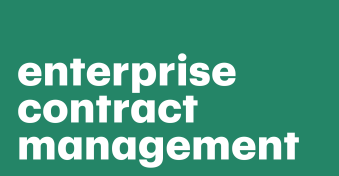Closing a deal is definitely the most challenging and demanding part of sales negotiations with the customer.
All the previous steps lose their significance once finalizing the deal is postponed or canceled.
In this article, you’ll find some valuable advice on how to seal the deal faster, as well as how to close the deal with an undecided customer.
Definition and typical steps
Let’s start with a clear understanding of the phrase “to seal the deal.”
Simply put, to seal the deal is to successfully finish what was started. In our context, it means finalizing the negotiation process by setting an agreement.
An average deal negotiation process typically consists of these steps:
- Submission of a proposal
- Promotion to the shortlist
- Becoming a preferred vendor
- Scope approval
- Quote sending
- Contract sending
- Contract signing
How to seal the deal: two different goals
There are two common goals that exist when we speak about the finalizing of the sales process:
- To make it as fast as possible.
- To close the deal with a customer who is in doubt.
Let’s unscramble both of these cases separately and find the most efficient ways for handling them.
Closing the deal faster
According to research conducted by HubSpot, the average B2B sales cycle for SaaS products is 84 days. And the higher your annual contract value, the longer your average sales cycle.
For example, deals that cost $100,000 or more last as much as 170 days on average.
The steps mentioned above in the corresponding block are tied to two main issues that slow down the deal closing speed the most.
The first is the multi-level approval process, common for almost any company that has grown past the micro businesses category.
The second is the sequence of actions both parties must adhere to in terms of adding any changes to the documents they’re negotiating.
Apart from the fact it may resemble a ping pong volley with the constant back and forth, the process may become highly complicated when factoring in the GDPR (in the EU) or the various laws in the U.S., which vary state by state.
In a nutshell, there are restrictions regarding the online sharing of documents that contain people’s private information, and it is imperative that you and your team understand them completely.
So, if addressing the problem at the highest level — with speed as our goal — hastening the deal could be reached by simplifying the approval process, as well as by making the documents free of restricted data during the negotiations.
The methodology that helps streamline and automate possible steps of contract negotiation is called contract lifecycle management (CLM). Let’s review the steps mentioned above through the lens of CLM and deal closing.
1. Submission of a proposal
So, you’ve just received a request for a proposal, found a potentially attractive job via invitation, or arrived at this step any other way.
Your set of tasks now looks as follows:
- Estimate the relevance between the RFP and what your business can offer.
- Thoroughly analyze what must be included in the proposal.
- Prepare all the data required.
- Write, finalize, and send your proposal.
It really looks very labor-intensive and highly customized, especially the last two points, right? But the truth is that these two steps can be shortened the most.
During our years of operation, PandaDoc has explored thousands of RFPs and found that the majority of the questions that came up were more or less similar and repeating.
Knowing everything (or, at least, more than anyone else) about your product or service, you can craft answers to these questions in advance, and then just slightly modify them.
This truly makes the magic happen: instead of days spent answering from scratch, you can get the same result in minutes.
2. Promotion to the shortlist, becoming a preferred vendor
Once you’re waiting for whether your potential customer will shortlist your offer, there is some room for improvements, too.
Actually, in many cases — especially if we speak about invitations to apply for a job — there are hard timeframes for each stage.
So, this is more about a higher convenience for your sales team rather than about speeding the process up.
So, once the proposal is sent, you have to wait for any feedback from the buyer. For the sales personnel, this could be nerve-racking.
A document tracking feature comes in here to help: using it, your sales staff will receive notifications about any action your opponent made with the document.
Of course, this doesn’t work if you’re sending docs just by email — you should use any software that allows document tracking.
3. Scope approval
The scope approval process depends on its complexity, the cost of a project, the approval process you’re using, as well as many other factors.
There are several common pieces of advice tied with the scope approval process that can help you hasten it.
Create a kanban board
Create a kanban board with the scope and add all the stakeholders there.
This way can seriously unify your communications, shortening pauses between both parties.
Offer a ballot box
In cases where there is no unity among the stakeholders, and they’re confusing each other, offer them a ballot box. The goal is to let each stakeholder involved decide on the scope independently.
The easiest way is to create a poll in Google, insert a list with the scope items, and add a possibility to vote for each one separately. We bet you’ll see a miracle soon after.
Hide all the personal data until the very last step
As we said before, negotiations that include any changes in the documents may become highly complicated with respect to privacy regulations.
For example, the GDPR bans the online sharing of documents that contain personal data.
So, for hastening the process, you should exclude all the personal data from the documents until their signing.
Some special software, however, offers the possibility of temporarily hiding all the private data sections.
Use the “bulk changes” feature certain applications offer
One more thing to mention is that the number of changes the second party has made could be huge, and you must somehow handle all of them.
Some tools offer a bulk application feature, but you must be very cautious with such actions so as not to overlook something important.
4. Quote sending
A quote is an integral part of the contract, containing all the scope, price, and conditions of the deal.
Making them custom for each new prospect is highly inefficient due to the high rate of repeating elements.
At a minimum, you should prepare your own templates of quotes for all the main cases your business could face.
But this could also be rather labor-intensive, as you must then maintain these templates.
So, it’s much more efficient to rely on the templates offered by special software that offers customizable templates.
5. Contract sending
This step creates similar challenges to that of scope approval. As a result, email is still the most popular contract routing tool.
But that doesn’t mean you should simply rely on the old way of doing things.
The next most popular routing option is employing various cloud software, and we’ve already depicted the pros of this approach above.
6. Contract signing
The last and most desired stage is contract signing. In today’s world, it is more likely than not that your customer is situated somewhere far away from you.
That’s why signing in person is surely not the most efficient approach. Moreover, both international and most local laws allow companies to sign their deals remotely.
This method is surely the fastest and cheapest and has fewer bottlenecks.
There are plenty of both paid and free eSignature services, trusted and reliable options to consider for streamlining these tasks. Just choose the one that fits your context the best.
Closing the deal with a doubtful customer
The situation is quite different when we speak about any customer expressing doubts or concerns, or whose unwillingness is simply the main challenge to closing the deal.
There is much less room for technical advancements that can help you seal the deal in this situation, and much more is required in the field of psychology and communication.
Below you can find some valuable tips for encouraging that doubtful, undecided customer to close the deal.
1. Identify decision makers in advance
Understanding who your primary target is during sales negotiations is always crucial. It is quite easy for people to hand out promises of any kind if they aren’t responsible for honoring those commitments.
For salespeople, pitching to the wrong person is one of their worst nightmares, resulting in the loss of time, reputation, and effort.
So, at the earliest stages of the contract management lifecycle, you must ensure that the people/personas you’ll address are the very same, the desired targets.
Conduct small research to identify as many employees of your prospect as possible. LinkedIn, Apollo.io, and similar sources are all helpful here.
Then, analyze them to define the largest set of possible decision makers. In small and micro businesses, the CEO is the ultimate decision-maker in the majority of situations.
For the bigger companies, there are usually dedicated roles for different branches of business activity.
You can employ some creative strategies to choose the right person from your list of employees.
For example, start communicating with another employee, building a rapport with whoever is both available and potentially the easiest route to learning more about or getting access to the real decision-makers.
While always keeping things above board and legit, it’s ok to think outside the box if the cost of the contract is high enough to justify your efforts.
2. Be well prepared
Once the decision-making stakeholder is identified, you should learn as much not only about the issues and opportunities their business has but also about the personal behavior of the stakeholder.
Even though B2B negotiations are much less tied to emotions than the B2C kind, the deal closing moment itself is highly emotional.
That’s why you must always take into account the personal needs, desires, doubts, and interests of your decision-maker, though they might be some exceptions of course.
Again, LinkedIn, Apollo.io, Facebook, and Google are your best friends at this stage. Pay attention to the social activity of people you’re researching: their posts, comments, shares, etc.
There are also many other valuable tools for knowing your negotiator better. The more you know about the person of interest, the more chances you have to sell them on why your offer or product is worth it.
3. Identify and overcome objections
Objections are shreds of evidence revealing the doubts of your customer. And they must be obligatorily addressed, even the smallest and seemingly least significant ones.
Ask more about them, and you’ll surely find what you’re looking for.
Some of the possible objections could be found during the preparation of their business: again, think outside the box about their context, as most potential objections usually come from this.
Imagine that everything within the deal went south — this way you can see the possible fears, risks, and doubts of the other party much more clearly.
Then, don’t forget to identify their personal risks to complement your list of objections.
4. Don’t make the contract too complicated
It’s obvious that the longer and more complex your contract is, the longer it will potentially take for another party to approve and sign it.
That’s why it’s crucial to exclude from the agreement all text that is unnecessary and optimize the rest.
There is, however, an easier and more streamlined approach — using ready-made templates offering different contract management software.
PandaDoc, among others, has plenty of contract templates for different cases that are polished well and can be easily checked and applied by the other party.
5. Communicate face-to-face rather than by correspondence
Writing communication gives your opponent enough time to appeal to aspects of your arguments better or to find new doubts in exchange for just addressing them head-on.
Moreover, most of the psychological techniques mentioned here work well only in person.
So, if you are confident enough in your negotiation skills, try to meet face-to-face through online meetings rather than communicating by correspondence. Phone calls are ok, too.
6. Make the second party feel a sense of urgency
One of the oldest but still efficient tactics is to show the second party the urgency of the deal: your offer will only be available for a very limited time, after which the conditions will become less attractive for the buyer.
This “now-or-never” technique makes your offer look more valuable in the eyes of your buyer and raises the chances of the deal closing.
7. Try the sharp angle technique
If the customer asks for a discount, you can use it as a reason for closing the deal.
Just agree on the discount but only in this one instance, as the deal will be closed today, etc.
8. Offer options
Sometimes offering several options can really be key to decision-making.
Clearly detail what others are presenting as solutions, and make your desired option the most attractive by comparison
9. Use special questions
During the communication, there are some special questions that can be asked to encourage your opponent to close the deal.
For example, “does the product or service you’re offering address the issues of your buyer?” Or about the reasons remaining that prevent the deal from closing.
Asking such questions during the in-person session leaves no chance for the second party to avoid answering. So, if the question is formed properly, this is a strong negotiation tactic.
10. Just ask to buy
Yes, sometimes just a direct question can help you close the deal.
Don’t be so shy; ask the second party this highly important question and gauge the response accordingly.
11. Don’t forget about follow-ups
Send a follow-up after each communication session with the customer.
This shows you as a polite person, helps everyone stay on the same page, and establishes a relationship of trust between you and your customer.
You can also use video follow-ups for making your communications more engaging and memorable.
If the second party finds this approach attractive the first time, they will likely be impressed going forward with future video calls.
Conclusion
There are different ways to leverage helping you convince the other party to close the deal.
Some are more technical and help eliminate gaps among the contract negotiation steps, making them more streamlined.
Others are about psychology and help assure the other negotiating party that the deal is profitable and has no hidden pitfalls.
With PandaDoc’s contract lifecycle management features, you can address the first category, cutting the deal closing time drastically.
You can also learn a lot of insightful information about the best practical methods of closing the deal in our eBook, created in a collaboration with the HubSpot team.
Originally published November 12, 2020, updated August 29, 2022
Disclaimer
PandaDoc is not a law firm, or a substitute for an attorney or law firm. This page is not intended to and does not provide legal advice. Should you have legal questions on the validity of e-signatures or digital signatures and the enforceability thereof, please consult with an attorney or law firm. Use of PandaDocs services are governed by our Terms of Use and Privacy Policy.


